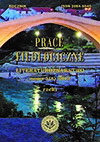Epigramatyka barokowa w świetle analizy logicznej
Logical analysis of Baroque epigram
Author(s): Krystyna Wierzbicka-TrwogaSubject(s): Literary Texts
Published by: Wydział Polonistyki Uniwersytetu Warszawskiego
Keywords: epigramat; barok; koncept; logika; entymemat; epigram; Baroque; conceit; logic; enthymeme
Summary/Abstract: The paper considers the question of the logical status of conceited epigram. 16th century theoreticians, for instance J.C. Scaliger, already applied logical methods to the analysis of epigrams, and 17th century theoreticians developed a strict logical description of the so-called compound epigram. This form of epigrams met with particular interest in the Baroque period because of the opportunity it gave to express the construction of a conceit. A conceit was defined as an “argument urbanely fallacious” by E. Tesauro, i.e. an enthymematical construction built upon a metaphor. It should be therefore called a paralogismo, but 17th century theoreticians avoided this term in the belief that the conceit offered special cognitive possibilities. In my paper I use logical methods to analyse the epigrams by J.A. Morsztyn, M.K. Sarbiewski and S.H. Lubomirski, to argue the assumed thesis that conceits served as logical experiments performed in the conviction of the insufficiency of Aristotle’s categories to describe the transcendent as well as the visible world. Above all, the questioning of Aristotle’s principle of non-contradiction allowed Baroque writers to transgress the two classical logical values, “true” and “false”, bringing along the intuition of a third logical value, defined in the 20th century as the “unknown” by J. Łukasiewicz.
Journal: Prace Filologiczne. Literaturoznawstwo [PFLIT]
- Issue Year: 2015
- Issue No: 5 (8)
- Page Range: 135-148
- Page Count: 14
- Language: Polish

